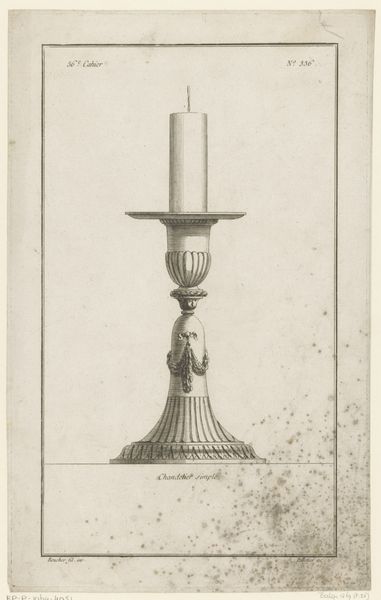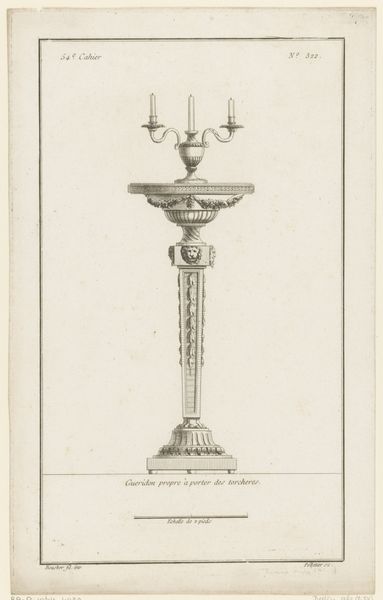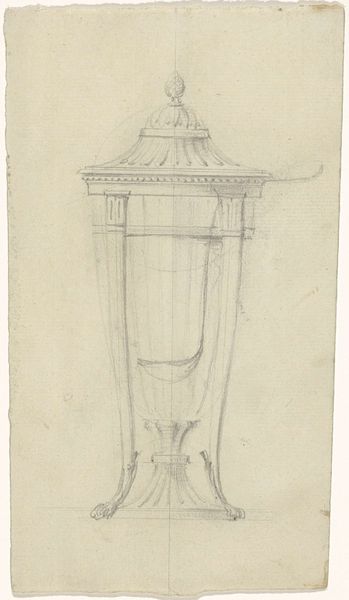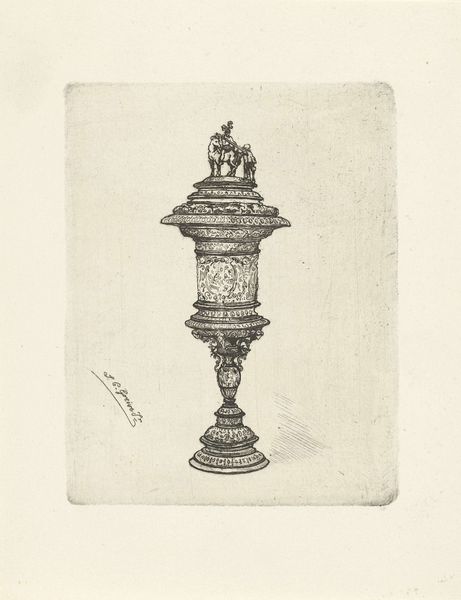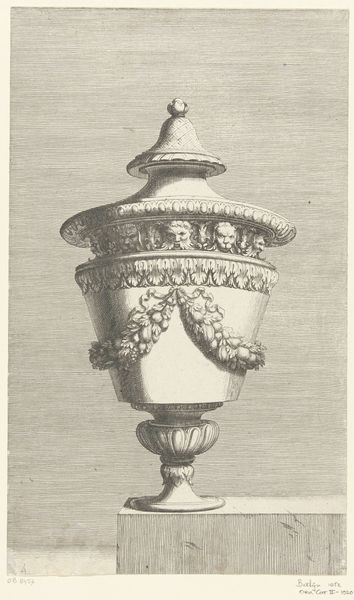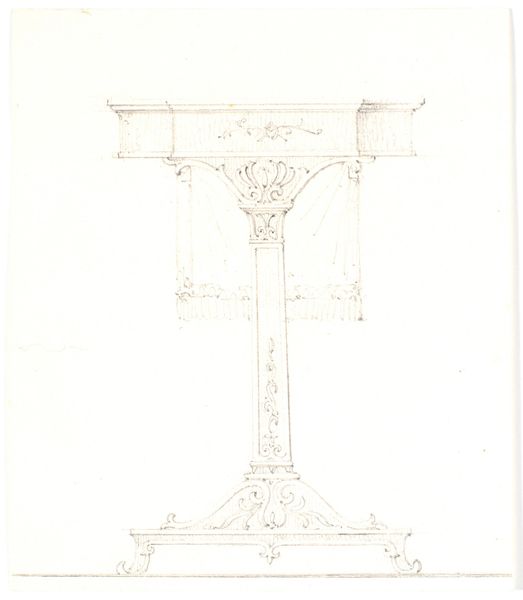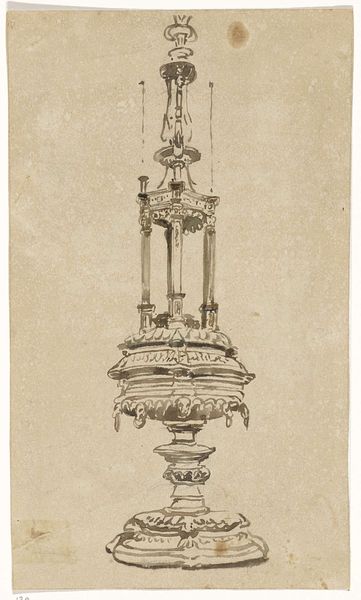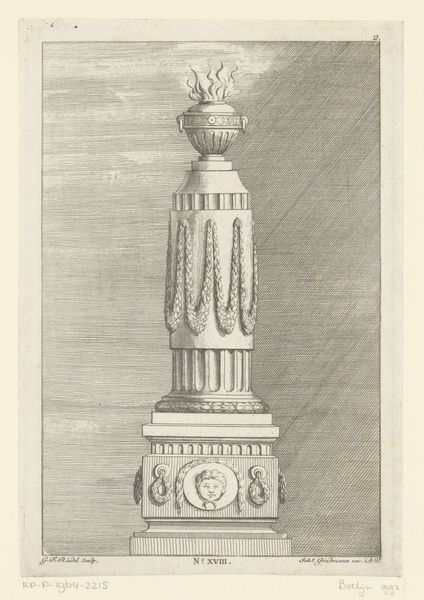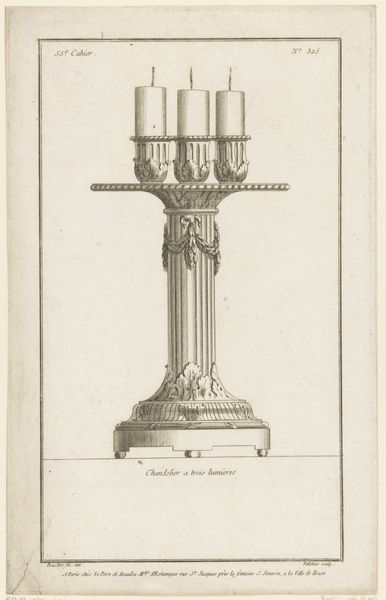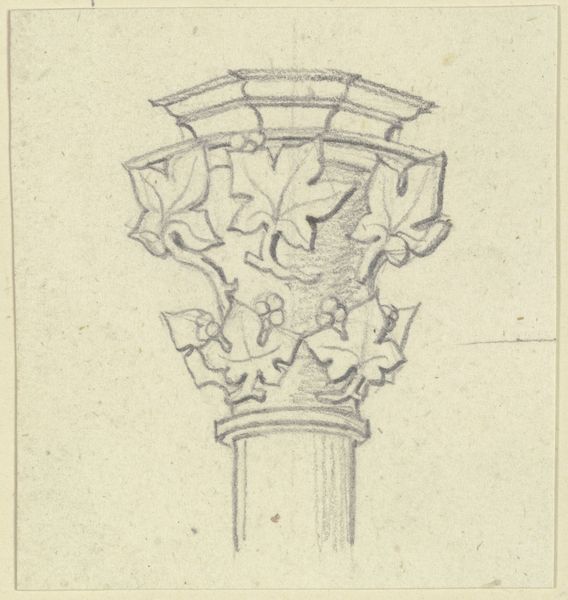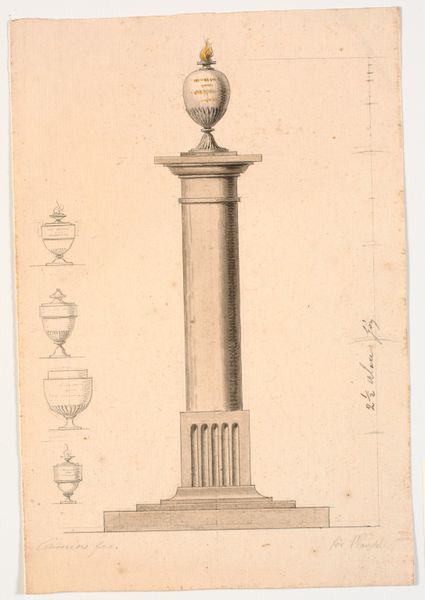
drawing, pencil
#
drawing
#
light pencil work
#
neoclassicism
#
pencil sketch
#
form
#
geometric
#
pencil
Dimensions: height 205 mm, width 124 mm
Copyright: Rijks Museum: Open Domain
This drawing of a lamp was made by Pieter de Goeje, who lived from the late 18th to mid-19th century. Though it’s just a sketch, we can still analyze it as a material object, and consider how it would have been made. The lamp’s design suggests a careful combination of functionality and classical ideals. The pillar-like form, reminiscent of ancient architecture, shows the maker’s skilled understanding of proportion, symmetry and how to design for manufacturing. Imagine it realized in wood or metal. A skilled turner would shape the central column, while a metalworker could cast the decorative top piece, adorned with delicate leaf patterns. The base, with its stacked geometric forms, might have been carved by a woodworker, each layer adding to the lamp’s formal presence. The production processes, whether using manual or industrial methods, would reflect the social values of the time. It brings up an important question: is a design like this any less profound than a finished artwork? I think not.
Comments
No comments
Be the first to comment and join the conversation on the ultimate creative platform.

